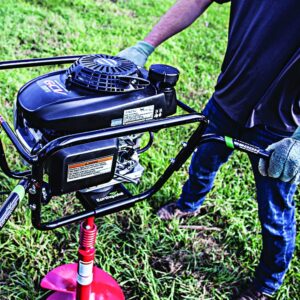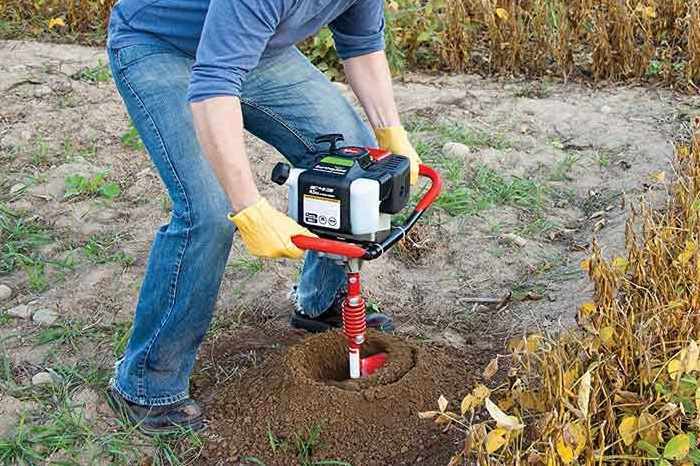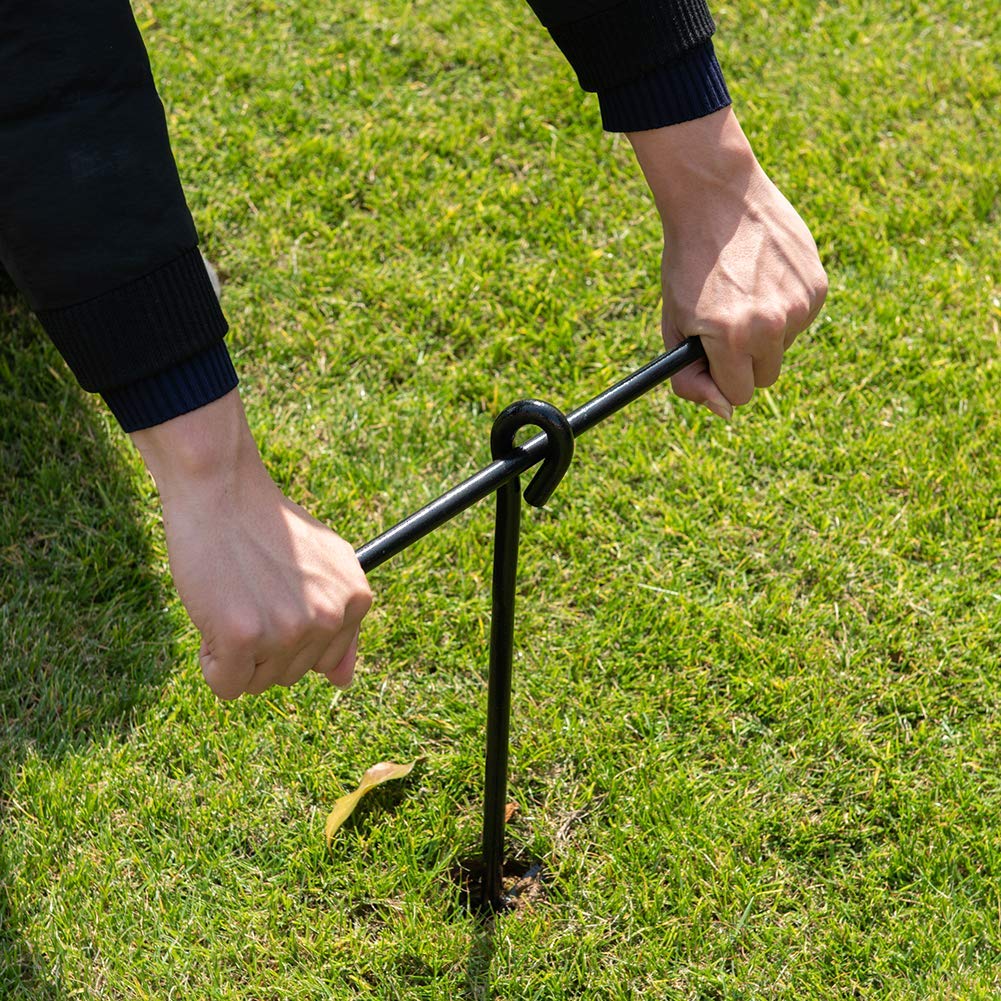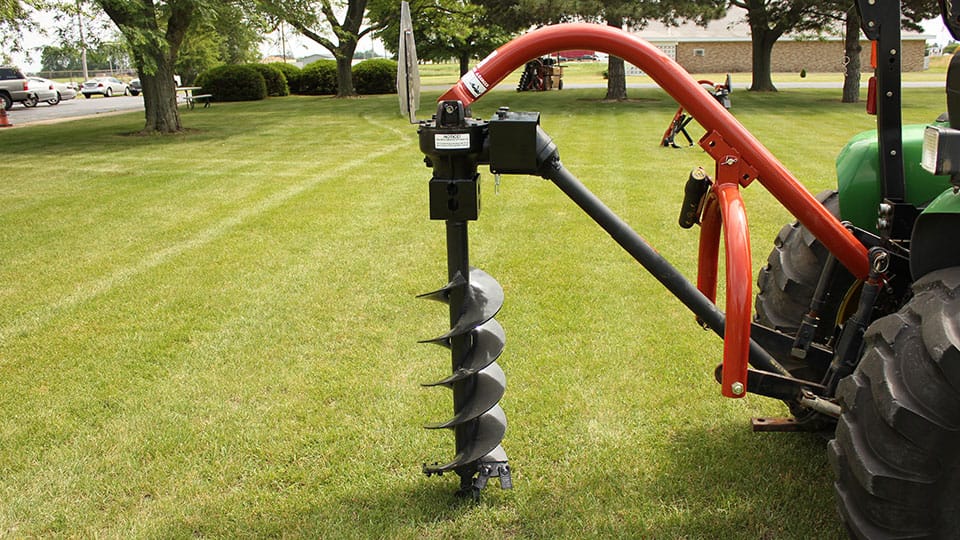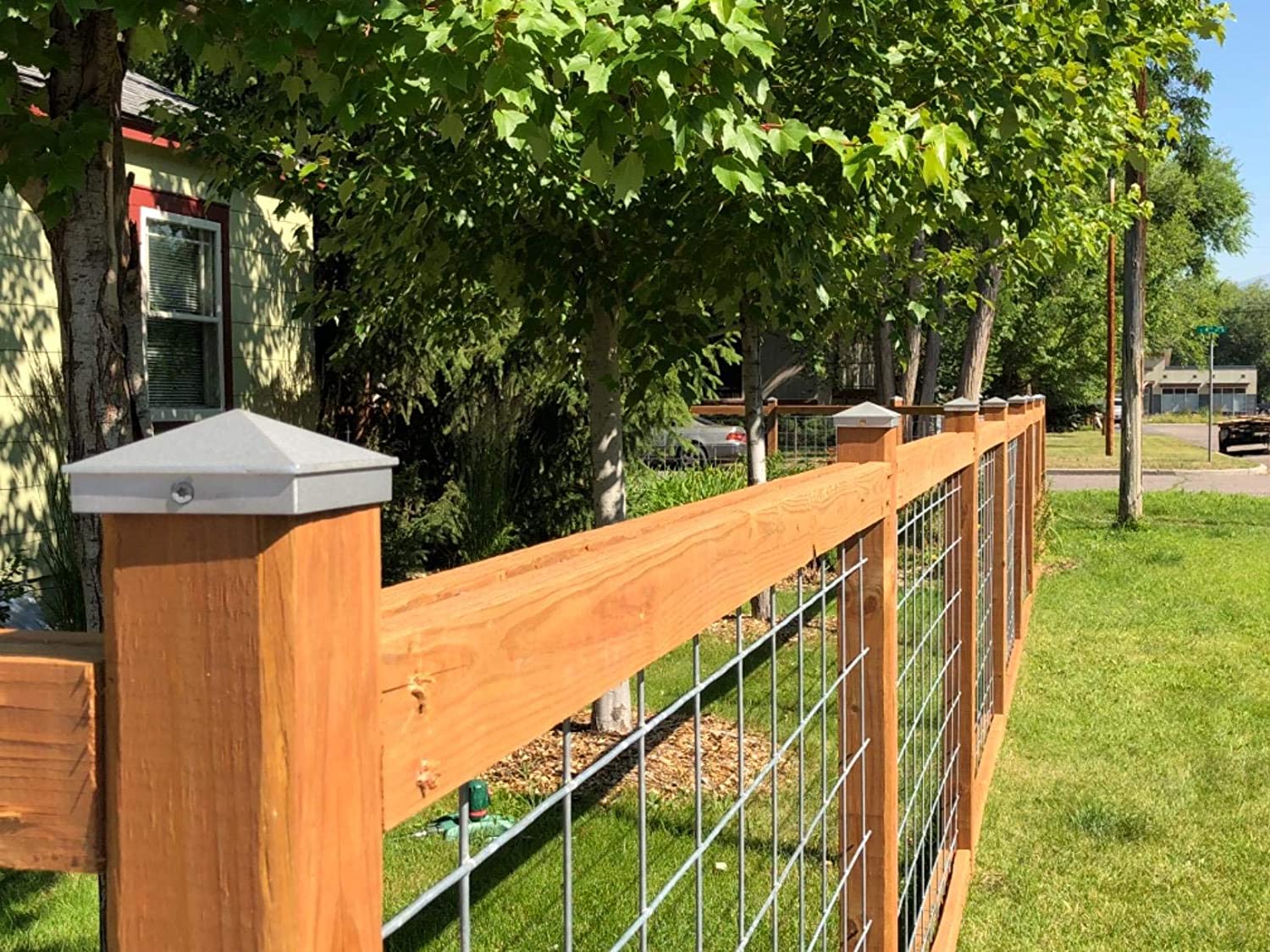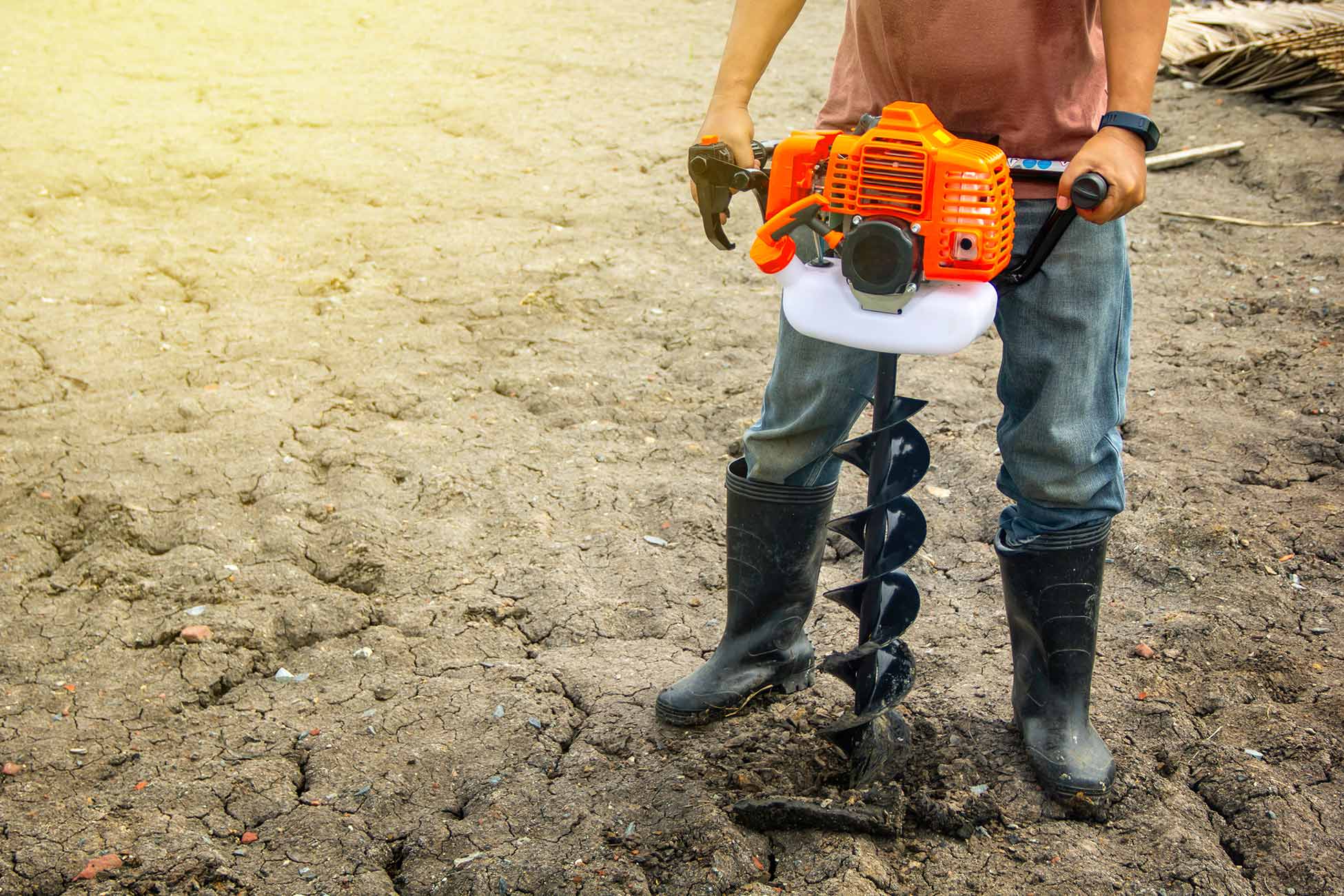An auger is a drilling device that contains a rotating corkscrew-shaped tool for removing drilling waste.
A rotating blade pushes the material out of the hole as it rotates.
A sharply pointed feed screw on the tip helps in precise drilling.
There are different types of augers available that range widely based on the purpose, materials used for drilling, and other factors.
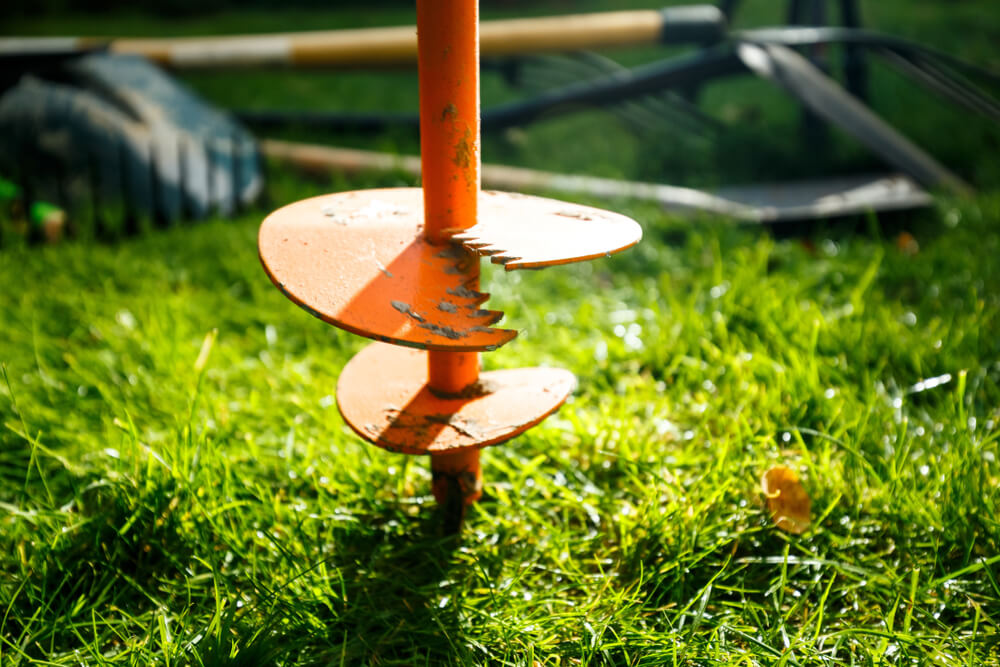
Auger best used:
- For ice fishing
- Planting seeds and trees in the ground,
- Set up a fence or pole, and collect soil samples
- For creating screw holes in wood or other woodworking purposes
- Planting mature trees
- Boring in coal mines
- Concrete Boring
Augers can be either handheld or machine.
Handheld augers can be operated manually or with an electric motor or a gas engine. Handheld augers can be classified as follows:
Handheld augers are commonly found as follows:
- Ice Auger
- Earth Auger
- Garden Auger
- Drain Auger
- Wood Auger
Machine augers are used in commercial and industrial applications. Often, they have powered attachments for tractors or other farming or construction equipment.
Machine augers are usually of the following types:
- Grain Auger
- Boring Auger
What Are Common Auger Sizes?
Augers can be found in just about any size you can imagine.
From a modestly sized handheld unit to units that need to be towed behind a tractor.
The auger bits can be mounted on a wide variety of trucks or machines and it is also available in different diameters and lengths ranging from 2 to 18 inches.
The available depths for an auger are generally 3 and 4 feet–but there are augers that exist that allow you to drill with more width and depth.
Those wielding a one-man auger shouldn’t use it for any holes exceeding 8 inches in diameter. Whereas two-man augers get the job done for a maximum of 18 inches in diameter.

Any project that involves holes wider and deeper than those listed above will require a crane-attached or tow-behind model.
Broad auger bits have blades that can be adjusted with radially expandable spurs and cutting edges to create large holes.
Even with the advancements in technology, auger bits are old tools that still have their trade among the modern drill tools.
How does it work?
As the auger rotates, it moves debris up and out of a newly drilled hole with the help of a cylindrical screw blade called a flighting.
Handheld augers are small and relatively lightweight.
They are operated by hand or powered by electric or gas engines which provide thrust, torque, and RPM.
Machine Augers are bigger in size and they work with two drive systems.
They are powered by a gear drive system which helps in digging through hard conditions like concrete surfaces, rock, etc.
It uses a hydraulic motor that is directly mounted to provide the required torque and as well as the RPM.
Augers are often attached to tractors or other agricultural equipment for power. Users should consult the manufacturer’s specifications and guidelines to determine which auger is suitable for their machines.
There are six main parts that make up an auger.
They are tang, shank, twist or helical shaft, spur cutting edge, and feed screw.

The tang is the square-shaped top chunk of the auger that can be attached to any machine or truck based on the requirement of the auger.
The shank is a long tapered segment that connects the tang to the blade’s starting point.
The twist refers to the helical metal blades that twist when pressure is applied to cut and extract the materials out. For example, when digging a hole, the debris swirls and settles in the blades which come out while reaching the shank.
The tip of the auger is the working end that directly engages with the surface or material that needs to be drilled.
As the tip contacts the surface, this sharply pointed screw holds the tool on track before the spurs begin to pierce through the material creating a hole according to the circumference of the helical shaft.
The spurs and cutting edge of the helical shaft are found close to the tip which moves inward by drilling precisely when pressure is applied by the fitted brace. The shaving debris is collected and carried away by the long run of the helical shaft.
Where are the Auger Bits Used?
The use of auger bits in the industry is extremely versatile.
It aids in different projects such as construction, geotechnical, environmental, and dewatering.
It is commonly used in soil borings, drilled wells setting, telephone poles, solar and deck posts, and fence posts, etc.
It is also used in the extraction of maple syrup from the trunks and in surface coal mining projects as well.
Two to three-inch auger bits are ideal for use in the garden which allows you to easily dig plant or grass plugs, fence post holes, and plant beddings.
Three-inch augers are also used in drilling horizontally for electrical lines and pipes under a pedway.
Four to five-inch tools can be used to drill large holes perfect for setting up a fence post and other garden plantings.
Likewise, with a further increase in the size and expansion of the auger bits, the more versatile the role becomes.
Different Types of Auger Bit

Wood Boring Auger Bit
Wood-boring augers feature spiral drill bits for drilling clean, deep holes in wood.
An auger bit of this type is most commonly used to make channels for pipes or cables in wood that are thick enough to drill through.
Woodworkers in the home are less likely to make use of augers than construction workers, who often need to drill deeper.
Triple Fluted Wood Bit
Three flutes enable these bits to cut wood stocks quickly and cleanly.
The cutting tool is extremely aggressive and quickly bores through the wood while leaving a rough surface.
A triple-fluted wood bit is one designed to bore wood as efficiently as possible.
These bits are typically used for boring large numbers of holes quickly without taking appearance into consideration.
Carbide Tipped Auger Bit
Similar to traditional wood-boring augers, carbide-tipped augers are designed to cut through hidden nails that otherwise would damage other bits, making them last considerably longer.
The carbide tip of an auger bit can be damaged if it is used to bore through wood containing hidden nails.
Attaching and removing carbide inserts from solid noses of bits is accomplished by set screws.
Masonry or Concrete Auger Bit
Masonry bits are drill bits designed to drill through concrete. Bricks and stones may also be drilled with them.
When it comes to drilling through solid concrete, tungsten carbide bits are very useful.
With the resilience of masonry and hammer drill bits, the concrete auger provides efficient clearance of waste material and a neat borehole.
Ice Auger Bit
Ice augers are enormous drill bits that can be powered by cordless drills through the use of an adaptor.
They are used to drill holes in thick ice by fishermen.
For drilling through ice, auger bits are ideally suited to use at a low speed, since the clean cuts won’t damage the surrounding surface during drilling.
You do not need to apply too much pressure when drilling with an ice auger bit.
Earth Auger Bit
Earth Auger bits are used for creating fence posts by boring into the ground.
In gardens, they are commonly used. They need a powerful motor like a chainsaw to operate them.
Instead of using batteries, these large drivers are powered by a mixture of gasoline and oil.
In a home environment, these tools aren’t very useful, unless you are installing fences or doing DIY projects in the garden.
Garden Auger Bit
In comparison with industrial augers, garden augers are hand-held and lightweight. They are also considerably less expensive.
In addition to planting bulbs/grass plugs and digging fence posts, they are used for landscaping and gardening.
In addition to saving time, a garden auger also improves soil-to-root contact.
Grain Auger
Transporting large amounts of grain is the function of a grain auger. With a grain auger, a solid shaft is run around by a flighting that encircles the shaft counterclockwise.
From there, the grain is drawn up into the shaft, after which it is ejected. Grain may be deposited directly into a truck or into a silo.
What You Need To Know Before Buying An Auger
Almost all augers must meet specific specifications, including the diameter of the interior screw, the length of the pitch, and the size of the flighting. Torque, speed, and forward thrust are among other specifications.
In order to use an auger properly, specifications are necessary reference points. Boring machines, for example, contain crucial job information in their augers.
Check these specifications:
- Type of engine
- Ratio of transmission
- Torque rating and gearbox ratio
- Types and capacities of fuel
- Need for octane
- The clutch system
- Type of auger drive
- Range of working
The auger drill bits must be removable so that they can be changed depending on the project.
You will need to determine both the diameter (which will determine how wide the hole will be) and the length (which will determine how deep it can drill) when choosing auger drill bits.
You may also have to purchase auger extenders to drill deeper holes.
Consider these points when shopping for an auger for your farm.
Bestselling Auger in Amazon
Advantages and Disadvantages of Auger Drill Bit
There are many advantages to using auger bits when compared to standard drills. They are,
- Useful for drilling a good deep and neat hole in the woodwork. This capacity not only suits them for furniture applications and woodworks but also for construction projects and garden-related works.
- Drilling water or fluids is not necessary with the use of an auger because it provides a neat sample for all the environmental works.
- There is a vast range of auger diameters for boring works that work smoothly and does not require so much pressure.
- The shavings and debris can be easily evacuated from the hole which prevents the hole from becoming clumsy and clogged by the debris. Single twist auger bits can be more efficient than others at removing waste material while they can also run long to create deep holes without collapsing.
- The sharp spurs found on the working end of the auger bits can create uniform and smooth holes from the beginning till the end. Thus, the quality of holes is amazingly good with the use of auger bits.
As with any instrument, the auger bits also have some downside.
- It cannot provide major support in an urban fill project such as using concrete, wood, and brickworks.
- Unless a special auger serves a particular purpose like concrete augers, most of the augers are designed for drilling woods. Given that, the augers are prone to damage if used with the incorrect material.
- As the tip of the auger drill is tapered and very small, it breaks when it hits a wood knot.
- It can generate more waste which requires proper disposal.
Overall, every instrument or tool has its own limitations but when used to the purpose it serves, perfect results are produced. Likewise, auger bits are highly effective, handy, and affordable tools that can fit with any power supplying machines or trucks to drill perfectly clean and smooth holes.




